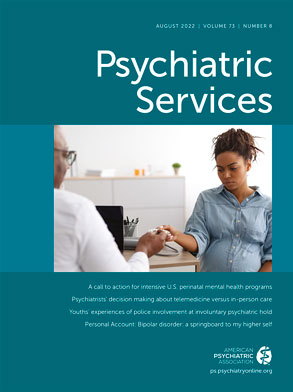As depicted in our logic model (see the
online supplement), IPO inputs include three main partnership groups: academic and technical experts, system partners, and community stakeholders. Collaboration among academics, practitioners, policy makers, and intermediaries has been shown to be critical for use of evidence in practice settings (
8). Our model suggests, for example, that academic experts may share knowledge about D/I methods; practitioners offer information about service system needs and capacity; and community stakeholders, such as knowledgeable advocates, may highlight marginalized perspectives whose centering could increase readiness for change. This notion is congruent with cultural exchange theory, which posits that innovation results from bidirectional exchanges of knowledge, attitudes, and behavior across cultural groups (e.g., practice and academic) through debate, negotiation, and compromise (
9). Further, participatory research approaches emphasize system stakeholder perspectives in formulating implementation goals and strategies, thereby supporting “the deconstruction of power and democratization of knowledge” (
10). These frameworks underlie IPO inputs, supporting the idea that without a clear understanding of community resources and perspectives that shape uptake of innovations, sustainable system improvement will remain difficult to achieve.
Consistent with IPO studies (
4–
6), PMHP activities include consultation and technical assistance, such as sharing EBI knowledge and addressing system change barriers; best practice model development based on D/I and evaluation methods; training and education, including developing and distributing educational materials and convening learning communities; quality monitoring strategies, such as helping providers collect and use performance data; and planning and restructuring activities, such as prioritizing implementation approaches. These activities advance IPO objectives, including supporting knowledge and skill building at the levels of communities, organizations, and individual providers; negotiating evidence-informed strategies to fit service system culture and context; specifying problems and potential solutions, including a willingness to raise tough questions; and building long-term capacity to sustain policy, practice, and system changes.
The IPO mission, here stated as “realizing a vision for excellence in care for vulnerable populations that incorporates typically marginalized perspectives and builds capacity to foster health equity” is served by the objectives identified. To achieve excellence, an IPO centers previously marginalized perspectives, for example, by including historically underrepresented stakeholders’ perspectives that are often sidelined in the service of maintaining the status quo. Our model suggests that the mission is achieved when partnering dynamics catalyze IPO objectives, in turn, affecting intrasystem capacity outcomes (e.g., provider knowledge and skills) (
11) as well as intersystem capacity outcomes (e.g., number and intensity of service sector collaborations) (
12). The model indicates that such capacity improvements enhance the health of individual service recipients and communities through improved quality of care.

